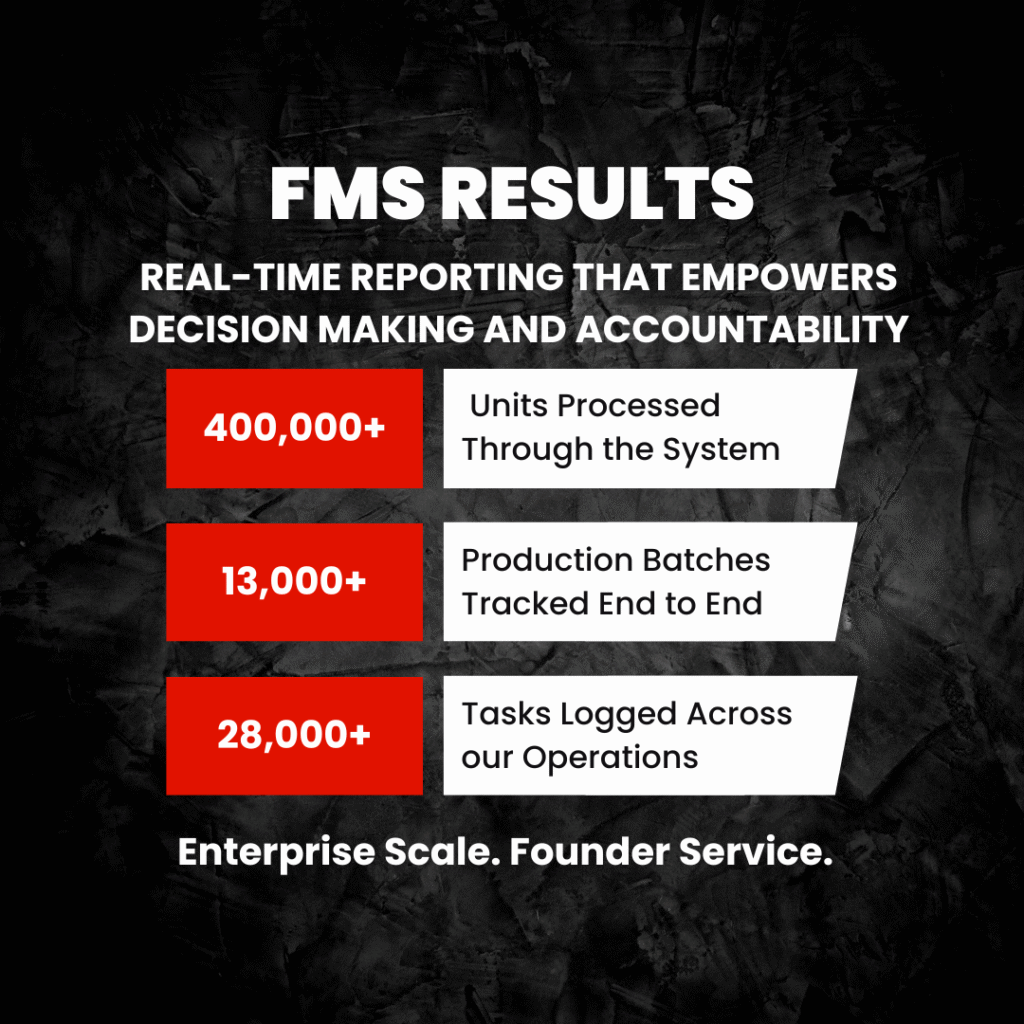From Survival to Strategic Advantage
Innovation Awards: How Our Flow Management System Transformed SJK
This past weekend at the EIGERlab 815 Innovation Awards, I had the honor of receiving…
The Origin Story
Back in late 2020, our company was about to hit a wall.
We were managing around 100 SKUs, each with its own packaging requirements to stay compliant with Amazon’s strict rules. Every product needed a specific bag, box, and label. Keeping all of that straight manually was becoming nearly impossible plus we had no visibility.
Did we receive everything we ordered?
How long does a prep actually take?
Are we operating efficiently?
What’s the true profitability of a product after production costs?
Without that visibility, items went missing, workflows weren’t working, and growth felt chaotic.
The obvious fix was software.
Enterprise warehouse systems were too expensive, rigid, and slow. Custom development took a ton of time and money and had nothing to show for it.
Out of frustration one night, I Googled “how to build an app without coding.”
That search led me to AppSheet: a no-code platform built on Google Sheets.
So, one weekend (fueled by frozen pizza and Mountain Dew), I locked myself in my office and built the first prototype of what would be FMS: The Flow Management System.
What FMS Has Become
Today, FMS consists of 14 integrated apps and 76 connected tables that manage every operational layer of SJK:
-
Inbound receiving
-
Production & fulfillment
-
Purchasing & inventory
-
Reverse logistics & reporting
It’s our single source of truth.
If I need an invoice, SKU cost, or historical production benchmark, it’s 3 clicks away.
Our team can see live expectations, performance benchmarks, and results.
We no longer guess how long something should take – we know.

Built to Evolve
That means one team can seamlessly run Amazon and Walmart operations using the same interface and structure.
The payoff? Fast onboarding, fewer errors, and consistent execution across every channel.
Turning Data Into Leverage
FMS allows us to run a high-volume, multi-channel operation with a lean team – something that typically takes dozens more people and layers of management.
It automates manual tasks, reduces errors, and ensures every product moves through our facility accurately, on time, and in compliance.
FMS is how we confidently manage hundreds of SKUs and thousands of orders while staying efficient and in control.
Proof That Scale Doesn’t Require Size
Because FMS collects and structures data at every level, we’ve been able to build powerful extensions.
One standout: our Walmart WFS Fee Audit Tool.
By automatically comparing actual product dimensions and weights against billed fees, FMS flags discrepancies and generates reimbursement requests instantly—backed by data and proof.
Those recoveries go straight to the bottom line.
The Outcome
What started as a weekend experiment became the backbone of our business.
FMS gave us back control, clarity, and confidence in how we operate.
It’s proof that you don’t need enterprise software or massive teams to run an enterprise-level operation. You just need visibility, structure, and the right foundation.
At SJK, that foundation is FMS: Our digital nervous system powering everything we do.
And the massive amount of data we’ve collected over the years lays the framework AI systems need to continue
optimizing our workflow, improving efficiency, and delivering better outcomes for our team, our brand partners, and ultimately, our customers.
Want to see how the Flow Management System (FMS) can streamline your operations or power exceptional eCommerce execution for your brand?
Let’s Connect.

